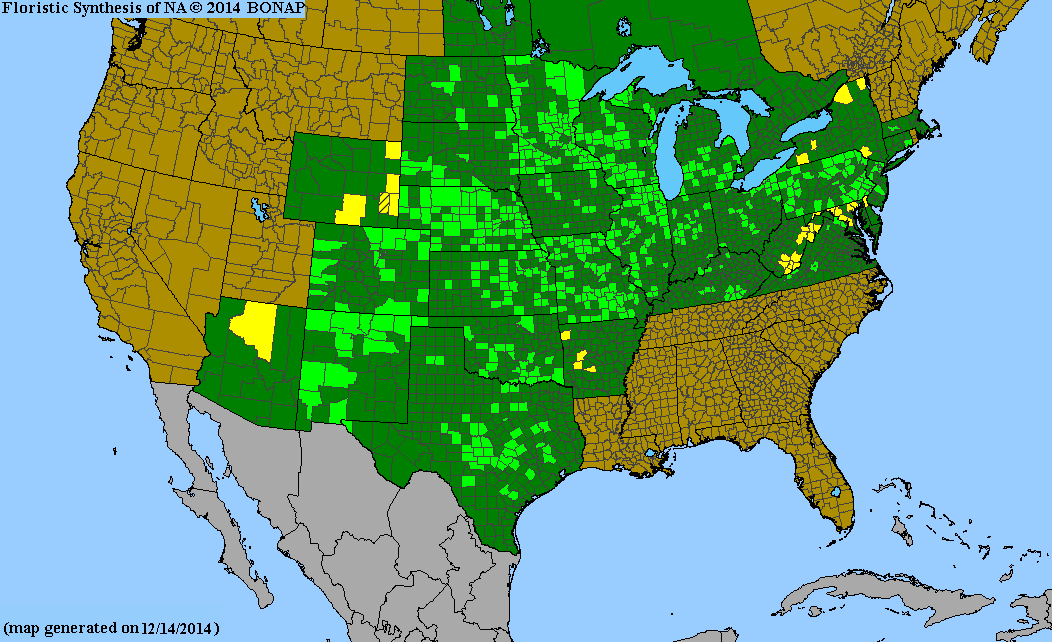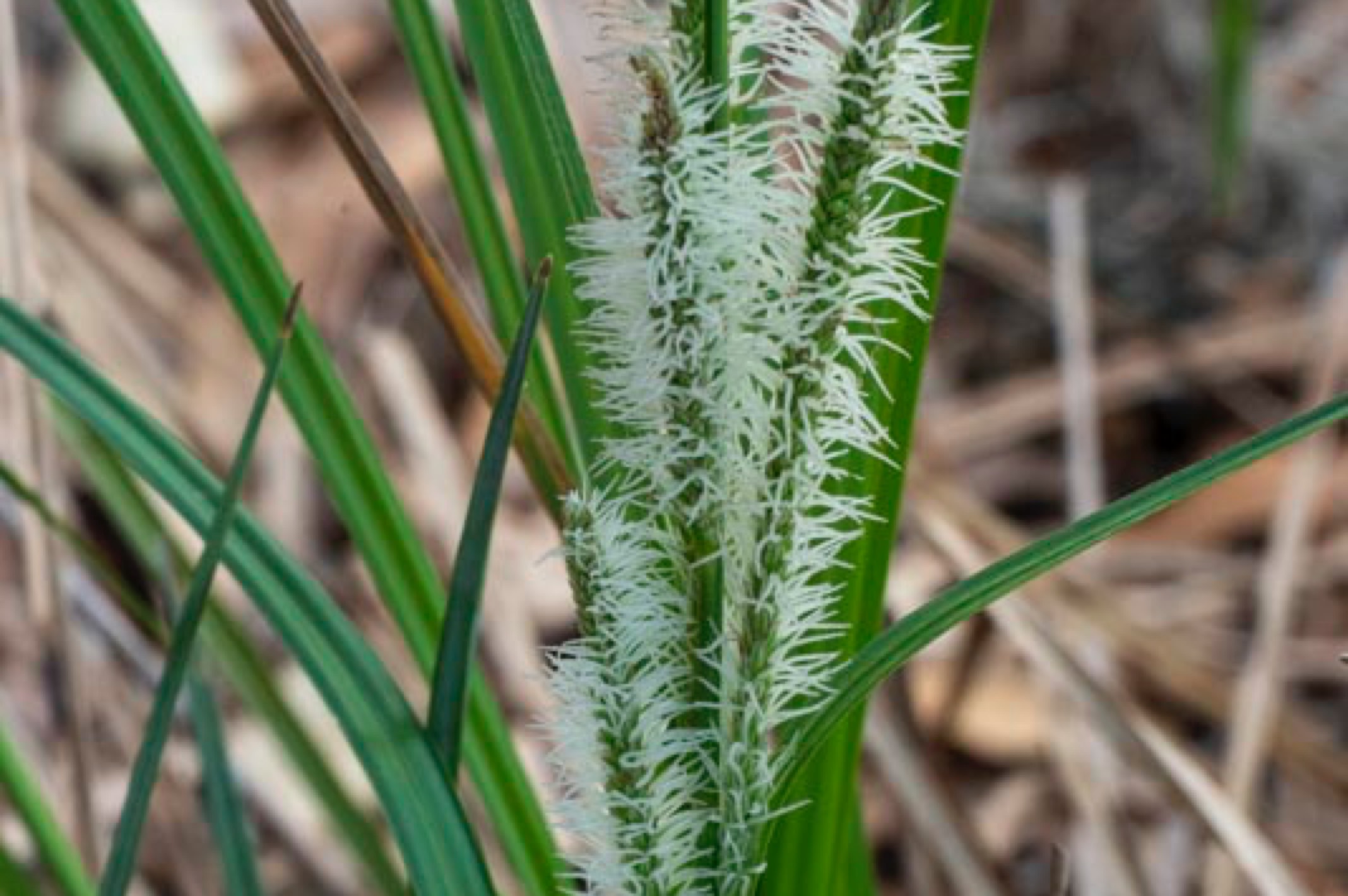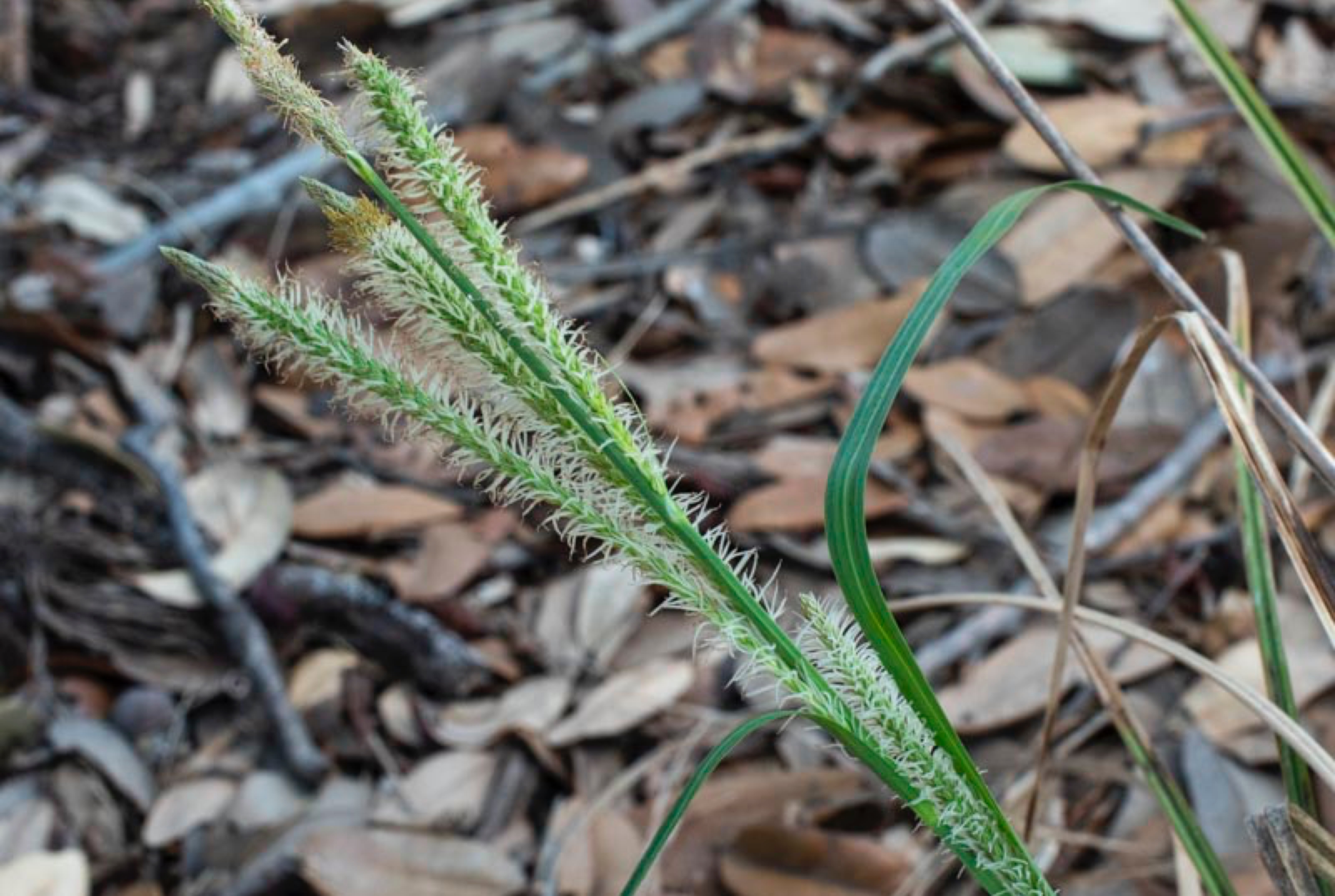Texas Wildbuds
Carex emoryi
(Emory’s Sedge)
| Scientific Name | Carex emoryi | USDA PLANTS Symbol | CAEM2 |
| Common Name | Emory's Sedge | ITIS Taxonomic Serial No. | 39591 |
| Family | Cyperaceae (Sedge) | SEINet Reference |
Click Here |
| Description | Habitat: Stream banks, ditches, marshes and seeps. Plant: Grass-like perennial grassy plant growing in large, loose tufts or clusters of several stems connected by rhizomes; 5 inches to 4 ft. tall. Leaves: Leaf bases form redish-brown sheaths around the stem; leaf blades are grass-like, linear and about 1/4-inch wide. Inflorescence: An elongated terminal raceme 2-3/4 to 8 inches long, having several compact spikes; the spikes closest to the branch tips have only male (staminate) flowers; those below have mostly female (pistillate) flowers; female spikes are 3/4 to 2-3/8 inches long, the lowest subtended by a long leaf-like bract; there may be male flowers on the top of the female spike; flowers are tiny without petals or sepals, each subtended by a scale. Bloom Period: April and May. References: "Manual of the Vascular Plants of Texas" by Correll and Johnston, Minnesota Wildflowers and SEINet. |
BONAP Distribution Map Map Color Key |
Texas Status: Native |
Banner photo of Castilleja indivisa and Lupinus ssp. taken along FM 1323 north of Johnson City, Blanco County
© Tom Lebsack 2025
Every attempt is made to provide accurate, up-to-date, and relevant information, but the completeness or accuracy of any information presented on this website cannot be guaranteed. I use authoritative references to insure high standards of accuracy and review and update the information frequently.

